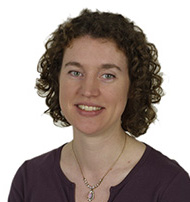Welcome to the thirteenth issue of Science in School Editorial article

Teacher Gianluca Farusi encourages his students to eat healthily with a colourful chemistry experiment to test the antioxidant content of different foods; Holger Maul, Nele Freerksen and I show why a simple vitamin – folic acid – is such an essential component of a healthy diet; and immunologist Ana de Barros investigates the roles of white blood cells in preventing cerebral malaria.
Saving life is certainly a worthy aim, but the quest to find life – beyond the limits of our planet – has seized the imagination of science fiction writers and scientists alike. Malcolm Fridlund introduces the search for extra-solar planets and extra-terrestrial life, and explains how this could tell us about the evolution of life on Earth.
The history of life is an ambitious enough topic, but some astronomers have gone further – probing the history of the Universe itself. Ana Lopes and Henri Boffin describe the search for the first light in the Universe – the first dawn.
Back on Earth, the dawn of understanding on a student’s face can be deeply satisfying. Jean-Yves Guichot’s project enabled his students to understand the nature of research by working side-by-side with research scientists; he offers advice for setting up a similar project.
Rather than developing a project for their students, Ludwig Eidenberger and Harald Gollner developed a project with two of them. They describe their activities to demonstrate the unusual thermodynamic properties of latex – including a thermal engine and a ‘refrigerator’. Thermodynamics is also one of the many phenomena that can be investigated using Bernhard Sturm’s science dramas. Why not try out his ideas for enacting redox reactions, radical polymerisation or the effect of heat on water?
Water is the crux of Giuseppe Zaccai’s research: he and his co-workers tested the assumption that biological reactions in vitro actually reflect the reality in the living cell. Scientists can heave a sigh of relief – it seems water does indeed behave similarly in the cell and in the test tube.
As if that were not enough choice of topics, we have more articles online – interviews with veterinarian Sarah Baillie and Italian teacher Alessandro Berton, a collection of online astronomy resources, and reviews of books and websites. From now on, these categories of articles will be online only, so don’t miss out – keep visiting our website.





